
- Gynecological Surgeries
- Laparoscopic Surgeries
- Intrauterine Contraceptive Devices
- Tubal Ligation
- Adhesiolysis
- Hysteroscopy And Polyps
- Laparoscopic-Oophorectomy
- Laparoscopic-Treatment-For Ectopic Pregnancy
- Radical-Hysterectomy
- Bilateral-Endometriotic Cyst Treatment
- Laparoscopic Myomectomy
- Laparoscopic Ovarian Cystectomy
- Laparoscopic-Tubal Ligation Aftercare
- Uterine-Prolapse
- Hysteroscopic-Resection-Of Submucosal Fibroids
- Laparoscopic-Hysterectomy
- Pelvic-Inflammatory Disease Pid
- Vaginal-Vault Prolapse Repair
- Gynecological Surgeries
- Laparoscopic Surgeries
- Intrauterine Contraceptive Devices
- Tubal Ligation
- Adhesiolysis
- Hysteroscopy And Polyps
- Laparoscopic-Oophorectomy
- Laparoscopic-Treatment-For Ectopic Pregnancy
- Radical-Hysterectomy
- Bilateral-Endometriotic Cyst Treatment
- Laparoscopic Myomectomy
- Laparoscopic Ovarian Cystectomy
- Laparoscopic-Tubal Ligation Aftercare
- Uterine-Prolapse
- Hysteroscopic-Resection-Of Submucosal Fibroids
- Laparoscopic-Hysterectomy
- Pelvic-Inflammatory Disease Pid
- Vaginal-Vault Prolapse Repair
Laparoscopic tubal-ligation-aftercare
A tubal ligation is a process deployed to achieve birth control permanently. Here the fallopian tubes are either cut off or blocked which prevents unwanted pregnancy as it blocks the passage of the egg to the sperm and uterus. With Laparoscopy it is possible to view the area and conduct the surgery by making small incisions in the abdomen region.
In the case of a laparoscopic tubal ligation, the doctor makes two small incisions, one, in or below the navel and one, slightly lower in the abdomen. The abdominal cavity is inflated with a harmless gas to enable the surgeon to see the internal organs clearly and avoid injury to other organs inside the abdomen.
The surgeon inserts the light tube (laparoscope) through the hole. The device has a lens that magnifies the areas inside giving the specialist a clear view. Along with, special tools required to cut the fallopian tubes are also inserted or these are inserted in the incision just above the pubic area. The surgeon positions the tools by looking through the laparoscope and ensures that the tubes are cut in the desired location. This type of surgery leaves small scars and is the preferred method of surgery for a woman who is in good general health and not too overweight.
Mini-lap
A mini-laparotomy procedure is clinically referred to as mini-lap as it is done using a smaller incision (less than 2 inches) when compared with a regular laparotomy. The incision is usually done just above the pubic area and the fallopian tubes are pulled out, cut and tied off before they are placed again. This procedure is preferred for those who have had an abdominal or pelvic surgery before or have heart or respiratory conditions. It is also required that women qualifying for mini-lap must not be overweight or have a history of disease of the fallopian tubes like endometriosis or PID.
Recovery from a tubal ligation procedure takes up to three weeks. There are times it could take longer, particularly if it is done post a C-section. The patient experiences some pain at the incision site along with general pain in the abdominal area, dizziness, fatigue or pain in the shoulders. These conditions subside over time.
At Motherhood Hospitals our experts have the expertise to conduct Laparoscopic tubal-ligation and similar surgeries towards helping patients with a variety of conditions. All our centres are equipped with the latest in equipment and highly experienced doctors who will investigate, diagnose, and recommend the most appropriate treatment to ensure one’s recovery enabling an active life.
Uterine Prolapse
The uterus is secured in its place by a bunch of strong muscles and ligaments. When the area is stretched unusually it weakens these muscles and this can cause a uterine prolapse which is also termed pelvic floor hernia. In case of a uterine prolapse, there is a slipping of the uterus from its position into the vagina. There can be two kinds of prolapse – complete and incomplete. In case of a complete Uterine Prolapse, the uterus sags completely with some tissues remaining outside the vagina. In case of an incomplete Uterine Prolapse, the uterus sags partially.
A uterine prolapse occurs in several stages:
- First Degree Uterine Prolapse: In this case the cervix sags into the vagina
- Second Degree Uterine Prolapse: In this case the cervix is just at the opening of the vagina
- Third Degree Uterine Prolapse: In this case the cervix outside the vagina
- Fourth Degree Uterine Prolapse: also termed as procidentia, here the whole uterus is outside the vagina
Symptoms of Uterine Prolapse
In early stages, the condition would go unnoticed. Subsequently, symptoms begin to develop and as they begin to advance, the following symptoms show up.
- Discomfort in the pelvic area and constant pressure in the lower abdomen region
- Increased discharge from the vagina
- Pain during sexual intercourse
- Vaginal bleeding
- Tissue protruding outside the vagina can be noticed
- Tugging feeling in the pelvic area
- Lower back pain and urinary issues and discomfort during walking
- Difficulty in urination
- Recurring bladder infection
- Other conditions such as cystocele, rectocele, and enterocele
A uterine prolapse is caused due to several reasons including:
- Multiple Vaginal deliveries could cause uterine prolapse
- Weakness of the pelvic floor muscles
- Chronic cough
- Loss of muscle tone post menopause
- Heavy weight lifting immediate postpartum period
- Pressure in the abdomen due to coughing, strain during bowel movement, constipation, pelvic tumors or fluid in the abdomen
Diagnosis
Uterine prolapse can be detected by an experienced physician or a gynecologist. After ascertaining the history of the patient, a physical examination is conducted with the patient in standing position or lying down. A speculum is inserted enabling the doctor to have a clear view of the vaginal canal and the uterus. The doctor may advise the patient to push a bit while it is done during a bowel movement to assess the extent of prolapse. Blood investigations are initiated to gather the levels of estrogen and other hormones. Further evaluation is done with an ultrasound and if needed an intravenous pyelogram or a renal sonogram are advised.
Treatments
Treatment depends on the severity of uterine prolapse. Your doctor might recommend:
- Self-care measures. If your uterine prolapse causes few or no symptoms, simple self-care measures may provide relief or help prevent worsening prolapse. Self-care measures include performing Kegel exercises to strengthen your pelvic muscles, losing weight and treating constipation.
- Pessary. A vaginal pessary is a plastic or rubber ring inserted into your vagina to support the bulging tissues. A pessary must be removed regularly for cleaning.
Surgery
Your doctor might recommend surgery to repair uterine prolapse. Minimally invasive (laparoscopic) or vaginal surgery might be an option.
Surgery can involve:
- Repair of weakened pelvic floor tissues. This surgery is generally approached through the vagina but sometimes through the abdomen. The surgeon might graft your own tissue, donor tissue or a synthetic material onto weakened pelvic floor structures to support your pelvic organs.
- Removal of your uterus (hysterectomy) might be recommended for uterine prolapse in certain instances. A hysterectomy is generally very safe, but with any surgery comes the risk of complications.
At Motherhood Hospitals we have a team of experts backed by excellent infrastructure in all our centres, capable of recommending the most appropriate treatments and handling surgeries related to gynecological issues including Uterine Prolapse. Do call any of our centres and take an appointment with our doctors for a thorough investigation, diagnosis and effective treatment enabling you to lead a healthy and active life.
DOCTORS

Dr. Kavya Krishna Kumar
MBBS, FMAS, MS
Consultant - Obstetrics & Gynaecology
Alwarpet, Chennai

Dr. Sireesha Reddy
MBBS, CCT, MD (OBG), FRCOG
Consultant - Obstetrics & Gynaecology
Bangalore, Hebbal

Dr. Dhanalakshmi R.
MBBS, DNB (Paediatrics), MRCP CH, Followership in Neonatal Neonatal medicine(UK), PGPN (USA), IPPN, ACLP
Consultant - Neonatology & Paediatrics
Bangalore, HRBR Layout






























































 Toll Free Number
Toll Free Number







